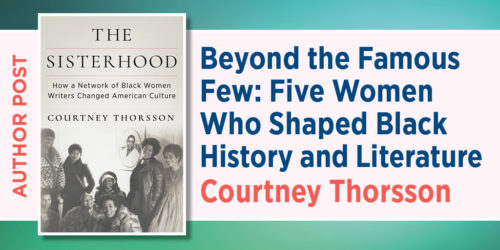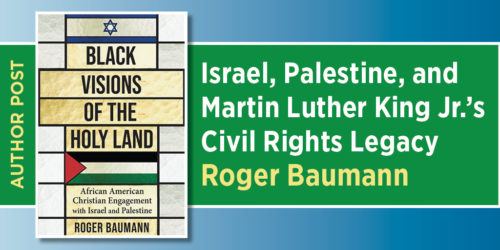Sandhya Shukla on Cross-Cultural Harlem: Reimagining Race and Place

Cross-Cultural Harlem: Reimagining Race and Place, proposes an understanding of Harlem as a place where peoples of different backgrounds collide, interact, and borrow from each other—and cross the borders of ethnic and racial identities and community enclaves in the process. Places like Black Harlem, El Barrio, Italian Harlem, and Little Senegal are often separated in both popular imagination and scholarly studies. Cross-Cultural Harlem draws them together for a deeper understanding of racial formation and cosmopolitan life in a legendary site.
Author Sandhya Shukla brings her interdisciplinary training and experience to bear on key literary, sociological, political, and autobiographical works. In so doing she theorizes Black geographies, locality and globality, and the modern city, exploring what it means to live in difference—not just with it.
Q: What motivated you to write a book on Harlem?
Sandhya Shukla: Harlem is an extraordinarily important place, to so many people, and in so many different ways. It is the global capital of the Black diaspora, a site for the storied Latino cultures of El Barrio, a font of progressive politics of race and ethnicity, and more broadly, a space for peoples who have been historically minoritized in race and class terms (African American, Puerto Rican, West Indian, African, Italian, Jewish and more) to live, work, and express themselves. It has always been changing; one could say it has never stood still. But the economic restructuring of recent years has made Harlem feel even more precarious, threatening all that we hold dear about it.
Gentrification’s losses—demographic, social, political, and cultural—make me determined to hold onto Harlem as a space of possibility. This is a Black place of great consequence, not just in terms of its glorious past but also in terms of belonging and empowerment in the future. El Barrio, which gave rise to Nuyorican politics and culture, continues to inspire Latino migrants from many countries. But the social landscape is rapidly changing, and neoliberal developers’ discourses about Harlem often tout “diversity” to effectively justify displacement and commodify culture. It seemed urgent to showcase Harlem’s full presence, foregrounding the histories of racialized experience and explaining the depth of social exchange that we want to protect.
Q: How is this book different from other books on Harlem?
Shukla: There are wonderful books on Harlem, on which my own project builds and to which it pays homage. Many of these works consider particular community and regional spaces within Harlem—Black Harlem, El Barrio, Italian Harlem, and more—while also being attentive to the complexities of peoplehood therein.
But Cross-Cultural Harlem takes as its topic the whole of Harlem, from east to west, from south to north, and the many places and peoples and their formations within. I do not mean to assert comprehensiveness or totality, but rather to elevate occasions where identities and ideas come into contact, sometimes intimately and sometimes conflictually.
The border-crossing occasions that I discuss in the book—the Life Magazine photograph of a dying Malcolm X in the Audubon Ballroom being held by Japanese American activist Yuri Kochiyama; “Spanish Blood,” a short story by Langston Hughes with a mixed Puerto Rican and African American protagonist; the sociological treatise Harlem: Negro Metropolis by Claude McKay on a heterogeneously Black geography; the politics of Vito Marcantonio, an Italian American left-wing congressman who connected with Puerto Rico and Puerto Ricans; and the life stories of the author Piri Thomas and the comic actor Alaudin Ullah, which express deep habitation through performance—all offer Harlemites’ own perspectives on a Harlem that is very much about relationality across race and ethnic identities.
Q: How would you describe your critical approach?
Shukla: The framing approach of this book is cross-culturality. It attends to what happens when you encounter difference and are changed by it, becoming who and what you are more fully, as well as something else. This idea derives from the Caribbean and that region’s layered histories of slavery, indenture, colonialism, nationalism, and regionalism, but it is an idea that travels exceptionally well to other majority-minority spaces like Harlem. I have always been interested in race and ethnicity, and specifically in how you can maintain deep identifications with communities while at the same time being open to differences within and connections across boundaries. This is an orientation of all of my scholarly projects, which discuss the Indian diaspora, the Americas, and more, but it finds its fullest form in Cross-Cultural Harlem.
In the examples that Cross-Cultural Harlem presents, racial, ethnic, and class identities are situated in networks of politics and the imagination built across adjacent neighborhoods. This “crossing” is what distinguishes a cross-cultural approach from a multicultural one. Multiculturalism can lead to a fixation on the liberal management of difference, of groups sitting side by side, without an understanding of how those groups are always in formation, always changing, and always in deep exchange with one another. By contrast, cross-culturality helps us see the possibilities (and difficulties) posed by racial and national mixtures, working-class cosmopolitanism, textured Blackness and Latinoness, and movement across regional spaces of Harlem.
Terms like “cross-culturality,” “relationality,” or even “border-thinking” can become quite abstract. While there is a need for what we call “theory,” I also give each theoretical idea that is explored in the book deep and historical substance. That can be seen in the opening occasion of Cross-Cultural Harlem where Yuri Kochiyama and Malcolm X met in Kochiyama’s Harlem apartment to discuss connections across the third world. Differential racialization as well as the affective pull toward Blackness for non-white Harlem peoples complicate notions of solidarity. And it is also the case that Kochiyama’s rush to the stage after Malcolm X was shot, captured by that famous photograph which circulated around the world, offers important perspectives on what can be imagined when many peoples live close together and participate in shared projects that cross boundaries.
Q: Are there methods and materials particularly appropriate for bringing this Harlem to light?
Shukla: I chose to explore figures, texts, and moments that may exist on the edges of dominant representation or established canons of Harlem, yet accentuate its cross-culturality. For example, the short story “Spanish Blood” is not always seen as central to Langston Hughes’s oeuvre, but I argue that the animating imaginary of that fiction enables us to consider Hughes, and Harlem, a little differently. Vito Marcantonio, a US congressman after all, so associated with Italian Harlem, opens up the locality and the nation, when we consider his practices of linguistic and other forms of translation.
In Harlem, representation and social life are inextricable: the long and storied histories of this iconic place deeply shape how it is experienced, even on the street, in a neighbor’s home, at a grocery store. That insight guides my version of interdisciplinarity. When I constellate Harlem stories that are literary, political, and performative—cultural in that broadest sense—I must engage in a reading practice that is both close (i.e., attentive to the particulars of the text) and contextual (i.e., about the interplay between production, consumption, and circulation).
Another point to make about method is that there is a fundamental but complex historicity basic to Harlem, and thus to my book. Cross-Cultural Harlem understands “Spanish Blood,” Hughes’s 1934 short story, to be created through the tensions and possibilities made available by the Harlem Renaissance in which Hughes was of course very active. Hughes takes the temperature of Harlem when he writes the story, and in so doing not only explains a conflict that involved racial misrecognition just one year later, but also processes concerns (his own and others’) about the long half-life of transatlantic slavery. So we could say that Hughes looks back through the present and into the future. My analysis throughout the book seeks to capture that rich temporality.
Finally, on the question of history, every moment of Cross-Cultural Harlem is haunted by potential disappearance. Much as Harlem has been full of meaning, energy, and sustenance, it has also felt fragile, very obviously because of racism. It is important to understand that complicated dynamic even though and especially because it cannot be easily resolved.
Q: What are the further implications of this work?
Shukla: This is a book about a real place and its peoples, and also representation and ideas. It cannot direct policy, but I do believe that spending some time with the topic of Harlem, in this way, gives us tools to think about messy futures. Rather than application, I prefer to think of how asking particular questions can constitute an intervention. A central dilemma that this study of Harlem poses is what it means to live in difference, not just with difference.
I began this project when I lived and worked in Morningside Heights in New York—a border area where the conflicts of belonging are especially tense and contain troubled relationships between poor and minority communities and the ever-expanding institution of Columbia University—and I completed it in Charlottesville, Virginia, which in 2017 gained notoriety as the site of white nationalist protests and became an international symbol of racist violence in the United States. Harlem and Charlottesville do not pose exactly the same kinds of questions about how to inhabit difference, but they do offer some shared concerns about race and nation, about who is to live and die and where people can reside.
An interpretive consequence of Cross-Cultural Harlem might be that after bringing ideas from the Caribbean to Harlem, we could move them to the smaller city of Charlottesville, and after that to towns and municipalities in other areas of the United States and the world. Charlottesville was made by a Southern history of plantation slavery and Jim Crow, but now it is also being shaped by migrants and refugees from many countries, in various states of legality and belonging; Black, Latino, Afghani, Somali, Tibetan, and other peoples regularly cross urban and suburban spaces and thereby give new meanings to the region. When we stray just a little farther, to the more rural eastern shore of Virginia, where former governor Ralph Northam grew up and infamously posed for a yearbook photo in blackface, we see active discussions of anti-Black racism alongside struggles for cultural membership by Mexican and Central American farmworkers.
Interrogations of big and small places and different (and shared) pasts of race, class, and development enrich the inquiry into social formation and encourage us to think about where we ourselves are situated in a range of cultural geographies, anxiously and hopefully and always differentially. Still, accompanying that inquiry must be a problematization of “we,” an acknowledgment that different voices and peoples cannot inhabit a single narrative and emplacing perspective.
In addition to theory, method, and materials, this book understands cross-culturality as a value. Though cross-culturality can never operate in some abstract utopian realm—it must contain failures and disappointments, especially where whiteness or anti-Blackness or antisemitism has been wedged between groups—it does offer instructive models. In the face of the specter of Harlem’s extinction, I ask about the life of this place and the project of ethical living in difference itself. This is to say that there is a great deal at stake for all of us in seeing Harlem as cross-cultural.








